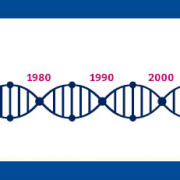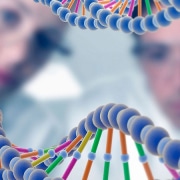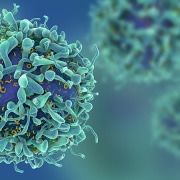Unravelling genetic risk of schizophrenia
Recent research provides substantial and surprising evidence of the genetic effect on mental health
Schizophrenia is among the most common serious mental health disorders, affecting around one in a hundred people. It is associated with abnormal perception of reality (including delusions and hallucinations), inappropriate social behaviour and cognitive impairment. Importantly, it is also linked to a significant reduction in lifespan of 12-15 years.
What causes schizophrenia?
Genetics is known to play a sizeable role in schizophrenia risk, with close family members of patients at increased risk of also developing the disease. An identical twin has a one in two chance of developing the disease if the other twin has it, whereas non-identical twins or siblings have closer to a one in seven chance.
In fact, research suggests that both genetic and environmental (external) factors are important in causing schizophrenia, and that the overall picture is a highly complex one. Variations in many different genes can contribute to risk, as can many different exposures and life experiences. For example, a recent paper reported a study of over a million people in Sweden that found refugees were three times more likely to develop schizophrenia or other psychoses than Swedish-born people, suggesting that health professionals should take account of life experiences as well as family history when considering the risk of mental health.
A genetic clue to a complex puzzle
We remain a long way off being able to decipher and explain individual cases of schizophrenia, or predict individual risk. However, new research has identified an uncommon genetic variant that causes a 35-fold increase in the risk of disease, an unusually strong predisposition. Scientists from the Wellcome Trust Sanger Institute in Hinxton, Cambridgeshire looked at the DNA sequences of the active parts of the genome (exome sequences) from over 5,000 patients and 16,000 unaffected people from the UK, Finland and Sweden. They identified variants in the SETD1A gene that were very rare in ‘control’ subjects, but present in ten schizophrenia patients, as well as in six people with developmental or neuropsychiatric disorders.
The results confirm the potential role of the SETD1A gene in the biological pathways that underlie schizophrenia, with the single greatest genetic effect ever observed for the disease – and it took a huge international collaboration to gather enough patients to find it. This is very different from examples of rare undiagnosed diseases where sequencing and searching the patient’s genome may reveal a single causative mutation and points towards the potential longer-term value of efforts such as the 100,000 Genomes Project to shine light on common diseases.
Towards new treatments
This finding has no immediate utility for schizophrenia patients or their families, but could be a first step towards new treatments. Currently, schizophrenia can be treated with a range of anti-psychotic medications in combination with psychological therapies. However, the drugs available are not effective in all patients and can have undesirable side-effects, so an effective new treatment would be invaluable. Researchers say that the SETD1A gene is involved in a form of chemical modification of DNA called methylation, which affects the control of genes within cells. Knowing that defects in the gene predispose to schizophrenia suggests new lines of investigation into possible treatments.
–









